Editor’s Note: This article on overland toilet solutions was originally published in Overland Journal’s Summer 2023 Issue.
When you announce your intention to travel by vehicle, an audience of loved ones and acquaintances will immediately become very curious. Not necessarily about border crossings or why you’ve decided to venture beyond a comfortable, predictable, and stable day-to-day life. No, they want to know how you will respond to the ever-present call of nature without constant access to a toilet. Where will you see a man about a horse? Wring out a kidney? These are fair questions—indoor plumbing, sewer systems, and waste management infrastructure are a feat of modern engineering that, if we have access to 24-7, we often take for granted.
Once we hit the road, it is necessary to adjust. The quality and cleanliness of “the facilities” range from great to not worth it. This means toting along toilet tissue and hand sanitizer (plus knowing when the plumbing system can and can’t handle it), learning how to flush with a bucket of water, and using a bidet or squat toilet—all eventually become second nature. With nowhere to hide in the desert, a Swiss woman taught me to hop under a bridge like a troll, watering the sand below. Genius. Overlanders are notoriously autonomous, so it’s no surprise we’ve adopted ways to make taking care of business more discreet and independent, utilizing trowels to personal urination devices, pee bottles, and portable toilets set up in pop-up shelters.
We are living in a time where more people are spending time outdoors. A study commissioned by the Outdoor Industry Association (OIA) in 2022 revealed that participation in outdoor recreation continues to grow at record levels. With this comes the responsibility to adapt to shifting best practices. The best current example is in the backcountry, where scientists and land managers have discovered the trusty cathole isn’t up to par anymore. An alarming statistic puts this into perspective: between 1951 and 2012, climbers in Denali National Park and Preserve deposited at least 152,000 pounds of human waste in the Kahiltna Glacier. Now, Parks Canada and the US Forest Service direct visitors to carry out their waste in sensitive areas, such as the high alpine, desert, river corridors, or the Arctic.
Fortunately, for the typical overlander, adhering to Leave No Trace principles will do just fine in most cases, and Waste Alleviation and Gelling (WAG) bags offer an efficient solution (more about those below) if you’re ever in doubt. It’s prudent to check ahead with the area management agency (where they exist) to find out what they require for carry-out systems. Fortunately, established dunnies or baños aren’t hard to come by in many parts of the world. But, if you’re remote or require self-containment, there are ample systems, devices, and products available to meet your needs.
For you, dear reader, I undertook the dirty business of testing a variety of privy products with the results outlined below. As with all gear, what works for me won’t necessarily work for you. However, I hope this round-up offers a glimpse into some quality items that could be a suitable fit.
CATHOLE SHOVELS
SOG Entrenching Tool
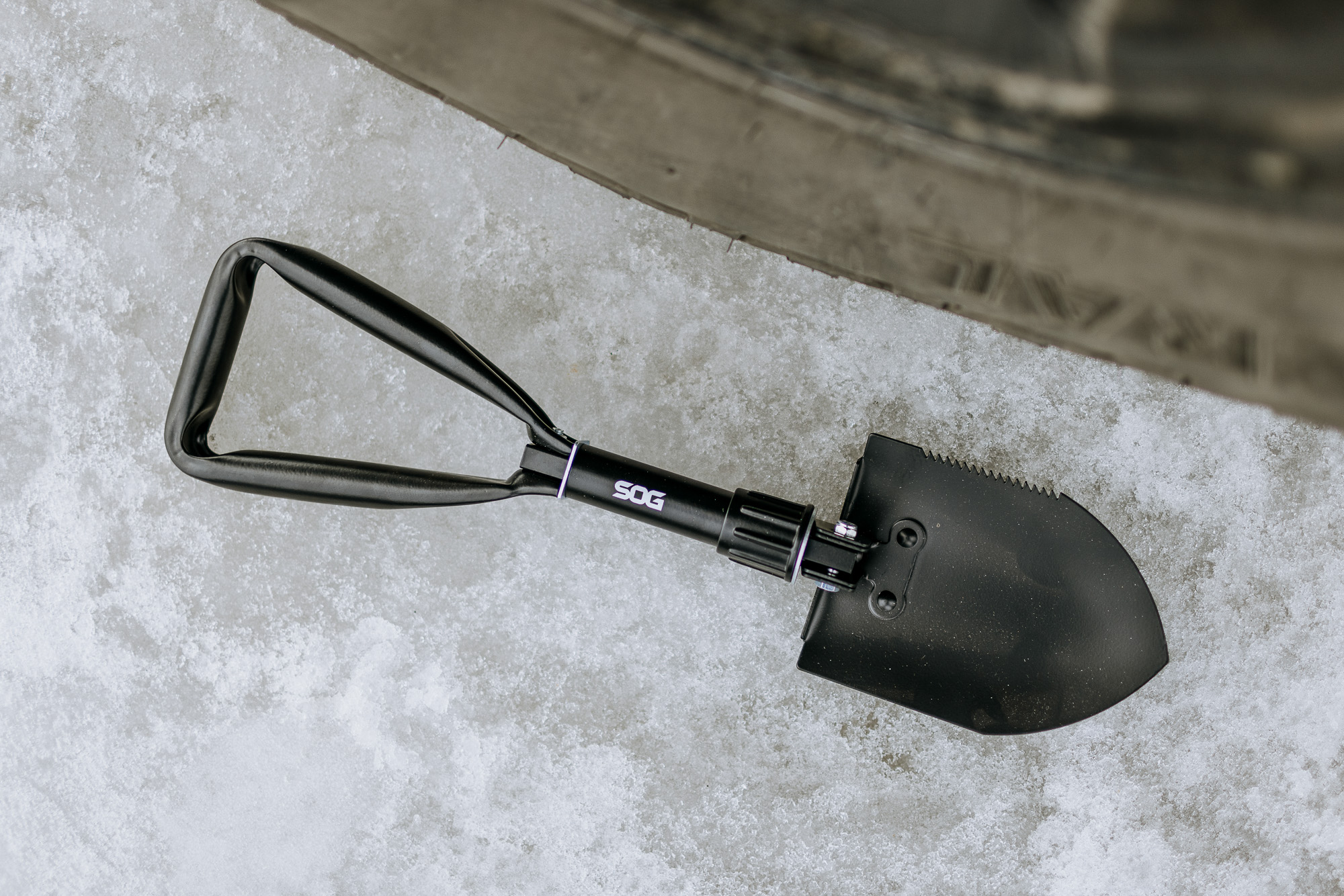
The origin of specialty tool and knife brand Studies and Observations Group (SOG) began in the Vietnamese jungle, where members of a US Special Ops unit, MACV-SOG, carried a special combat knife during covert missions. Years later, designer Spencer Frazer sought to reproduce the original SOG Bowie knife, paying tribute to the special ops that created it. Today, SOG offers a complete line of tools that are field proven by US Special Forces, and the collapsible entrenching tool is one of them.
Made of high-carbon steel with a black powder-coat finish, this shovel weighs 24.5 ounces (1.5 pounds) and, when folded, takes up the equivalent space of a stack of small paper plates, fitting into an accompanying ballistic nylon sheath. I appreciate the size and subtlety of the shovel when tucked into its black nylon case. It fits snugly into a small tote bag with other toiletries but doesn’t draw attention if transported alone.
During deployment, a triangular handle and tempered steel blade make up part of the shovel’s 18.25-inch length. I’ve used this shovel for years, and it continues to strike the perfect balance of being small enough to pack away easily but tough enough to dig catholes in varying terrain. The shovel is on the small side for some uses but is functional for many activities, from prospecting for clams to moving sand.
$30 | sogknives.com
The TentLab Deuce of Spades Trowel
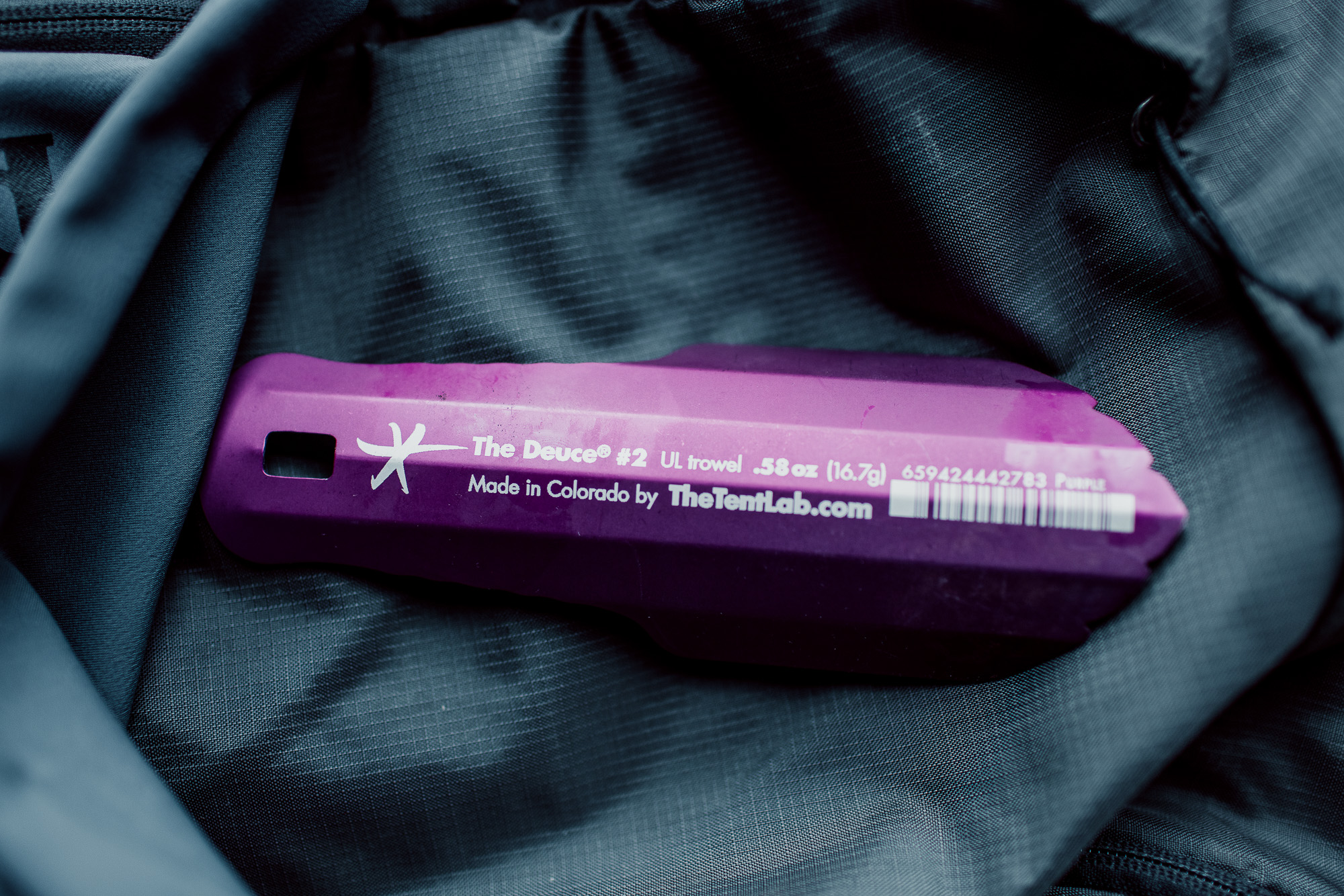
The aptly named Deuce of Spades is an ultralight backcountry trowel available in .45-ounce (Deuce #1), .60-ounce (Deuce #2), and .97-ounce (Deuce #3) models. While these are impressively small and incredibly light—suiting the adventure motorcyclist, backpacker, or payload-conscious overlander—can these tiny shovels perform? As advertised, four teeth on the blade’s leading edge cut through roots up to 0.5 inches thick and help dig an appropriately sized cathole. The secret lies in the recommended digging technique and its aerospace-grade aluminum construction, which also meets military specifications.
The trowels can be used one- or two-handed with the handle facing up or, for four times the digging power, with the handle pointing down. According to The TentLab, the Deuce’s strength comes from its curved shape that helps with levering and scooping while digging your cathole. Visit the company’s website for specific tips, advanced techniques, and more details about the lifetime warranty.
Finger-grip contours on the handle produced a secure grip during testing (although not particularly comfortable), and it is worth noting that digging can be difficult in rocky, dry conditions. But for damp or soft soil digging, the Deuce is ace. Finally, because overlanders love multi-purpose tools, the Deuce can also be used as a sand stake, shoehorn, bear canister screw tool, or bottle opener.
$22/#3, $22/#2, $19/#1 | thetentlab.com
BACKCOUNTRY BATHROOM KITS
Restop 2 Disposable Bag
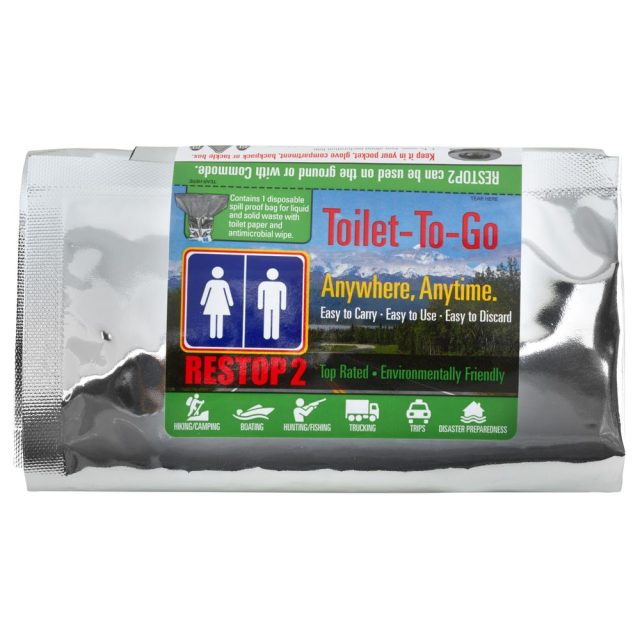
With $2,000 and an inventory of boating gear, river runner and business professor Bill Parks founded Northwest River Supplies (NRS) in 1972. The company’s catalog has grown since then and is filled with everything from dry bags to roof racks, paddles, safety equipment, and camp gear. Its product lineup includes a variety of toilet and waste systems, including the Restop 2 disposable WAG bags.
Using a “bag within a bag” design, each Restop 2 weighs 2.3 ounces and includes toilet paper and an antiseptic towelette. When rolled, the bag resembles a healthy-sized burrito, measuring 48 inches in circumference and 22 inches in depth. A single Restop 2 system can hold approximately three to four número doses in its inner waste receptacle, which contains absorbent polymers and enzymes and is tucked within a gas-impervious zip-locked Mylar exterior bag.
These sacks are compatible with the Cleanwaste Portable toilet system (discussed below), the Restop Commode, or can be placed on the ground if you’re in the backcountry or don’t have access to a portable toilet. I tested the product with the Wrappon PF-1 Toilet System (also reviewed below), and the bag’s triple-layer barrier inspired supreme confidence, was easy and intuitive to use, and made cleanup and disposal a breeze. My only gripe is that the mouth of the bag is slightly narrow—aim carefully.
$4.50/each, $51/12-pack, $102/24-pack, $394/100-pack | nrs.com
Pact Outdoors Wipes and Tabs
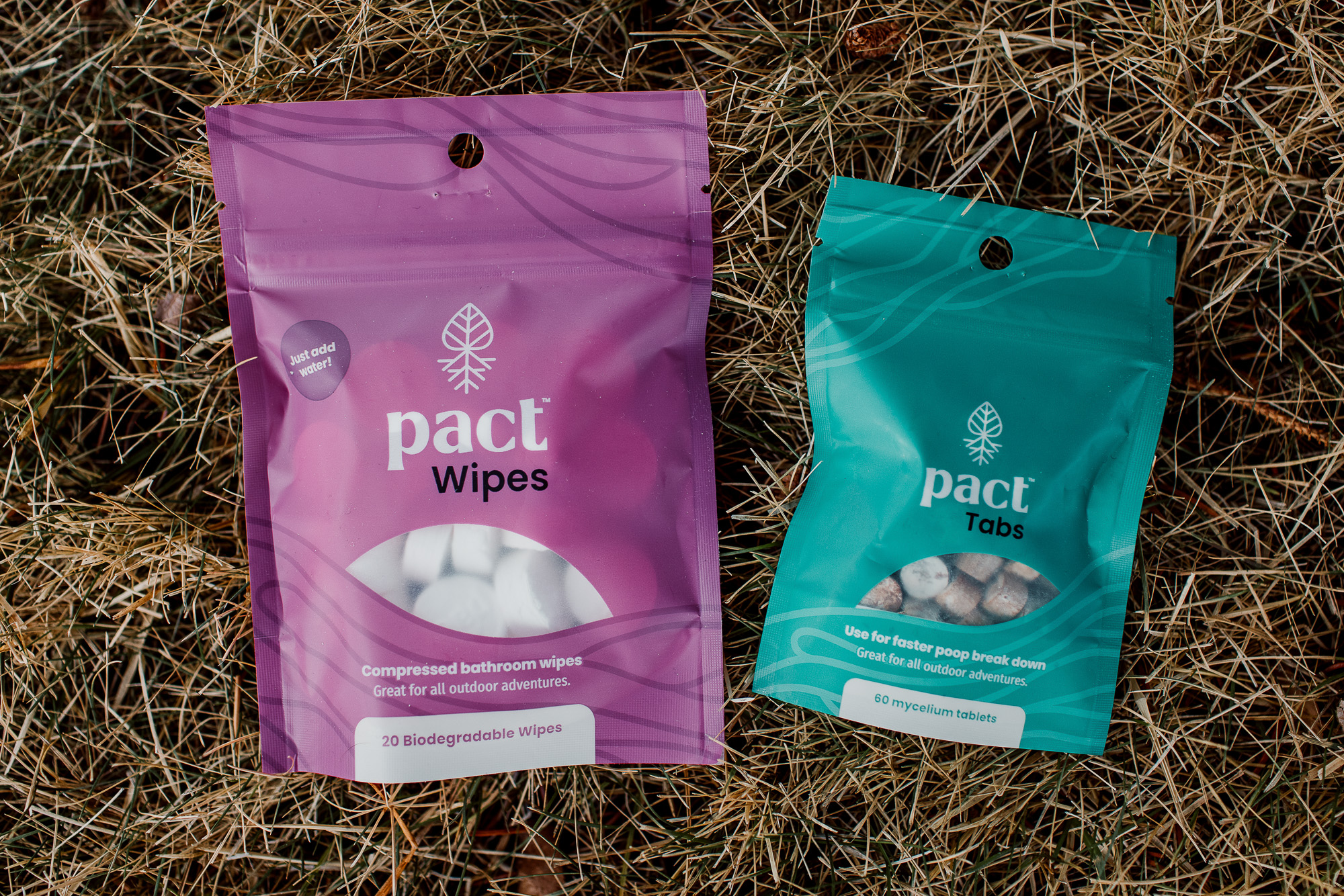
As a rock climber, Pact Outdoors co-founder Jake Thomas knew there must be a better way to manage outdoor “business” than using cobbled-together go-kits of toilet paper rolls, hand sanitizers, and baby wipes. So, he teamed up with Pact co-founder Noah Schum to create mycelium-based bathroom kits for outdoor adventurers. Obviously, the duo is onto something: the Pact Outdoors kits received Popular Science’s Best of What’s New award in 2021, the 2022 Outdoor Retailer Innovation Award, and Outside Gear Guide’s 2022 Best Backpacking Accessory.
While Pact offers an Outdoors Bathroom Kit (including a shovel, sanitizer, wipes, and tabs), I dipped my toe in the water by using a package of its wipes and tabs. The compressed wipes are biodegradable, weigh less than a gram, and are equal to the size of a bottle cap. Until you add water, that is—then the tab expands into a 9-inch towel that should get you through one bathroom trip.
Pact’s tabs are made from wooden plugs inoculated with the root system of fungi called mycelium. The brand says this found species for feces kills pathogens and decomposes solid waste material up to 10 times faster than the typical year it requires for your poop to break down underground. Add three tabs to your cathole (along with the above-mentioned wipe) before filling it with dirt.
$22 | pactoutdoors.com
PERSONAL URINATION DEVICES
PStyle in Recycled Ocean Plastic
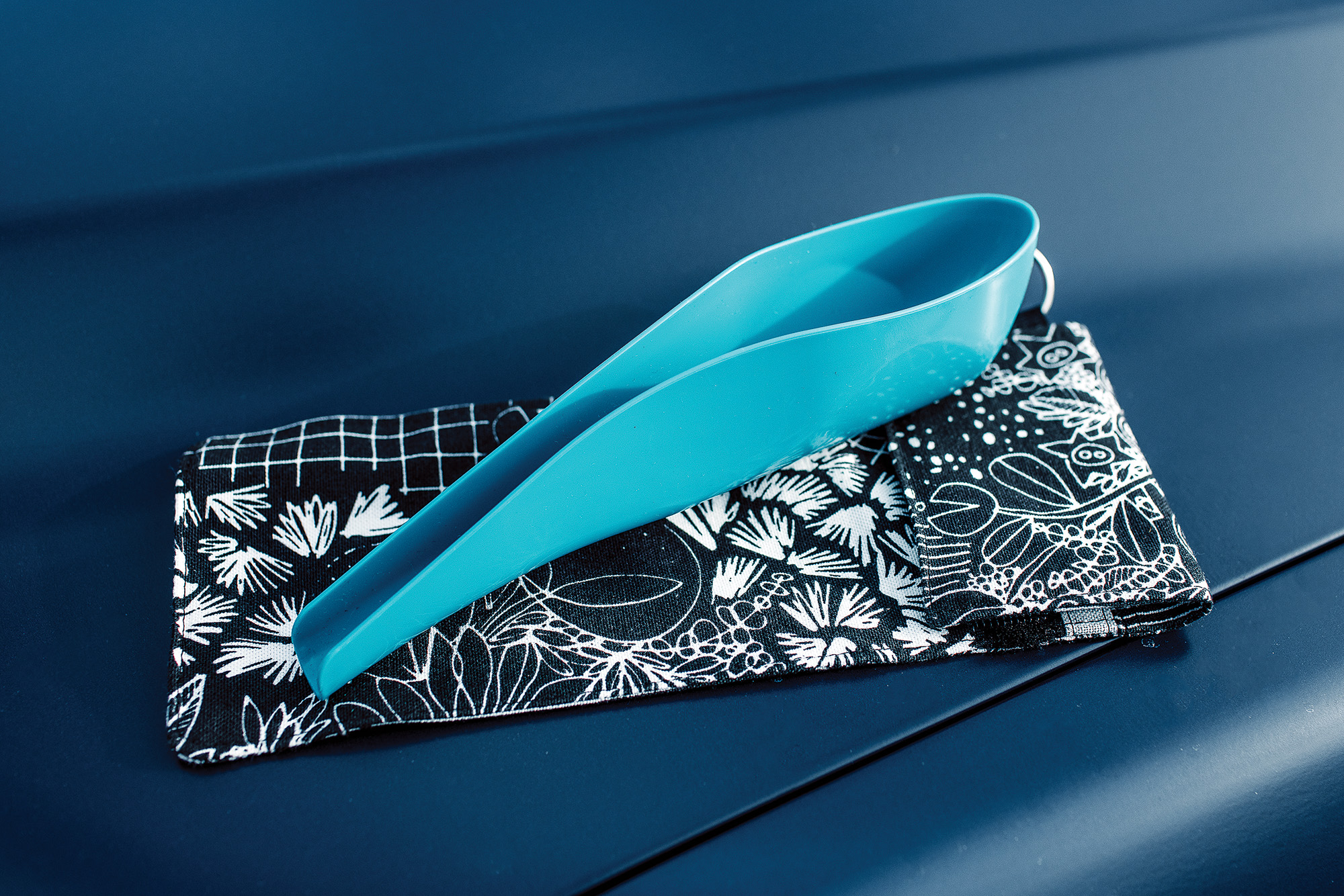
PStyle began in 2006 with a team passionate about the power of stand-to-pee devices. From police officers and ultrarunners to adventurers with physical restrictions, the company’s mission is to promote the comfort, health, and safety of all. The brand offers several versions of the device in a multitude of colors, with patterned carrying cases sold separately.
Made in partnership with Oceanworks, the recycled ocean plastic PStyle features BPA- and phthalate-free polypropylene recovered from fishing nets, trawls, and ropes. On testing, this rigid plastic made the handheld device straightforward to handle and maneuver, an important consideration for those new to the personal urination device world. There is an art to using a pee funnel successfully; it involves practice, proper placement, and tilt. Give it a go in the shower first—pee anxiety is real.
The device accompanied me across the Atlantic to Iceland, where I joined a team of seven males. Needless to say, the PStyle prevented me from a long trek into the distance, searching for a place to hide on the flat lava fields of the central highlands.
The device measures 7.75 x 1.625 x 1.75 inches and weighs 0.8 ounces, which means it’s easy to tote in a backpack, store in the side pocket of a vehicle, or tuck into a waist bag. Made in the USA, the product can be cleaned with soap and water, wet wipes, or placed in the dishwasher when you return home.
$12 | thepstyle.com
Freshette Sports and Travel
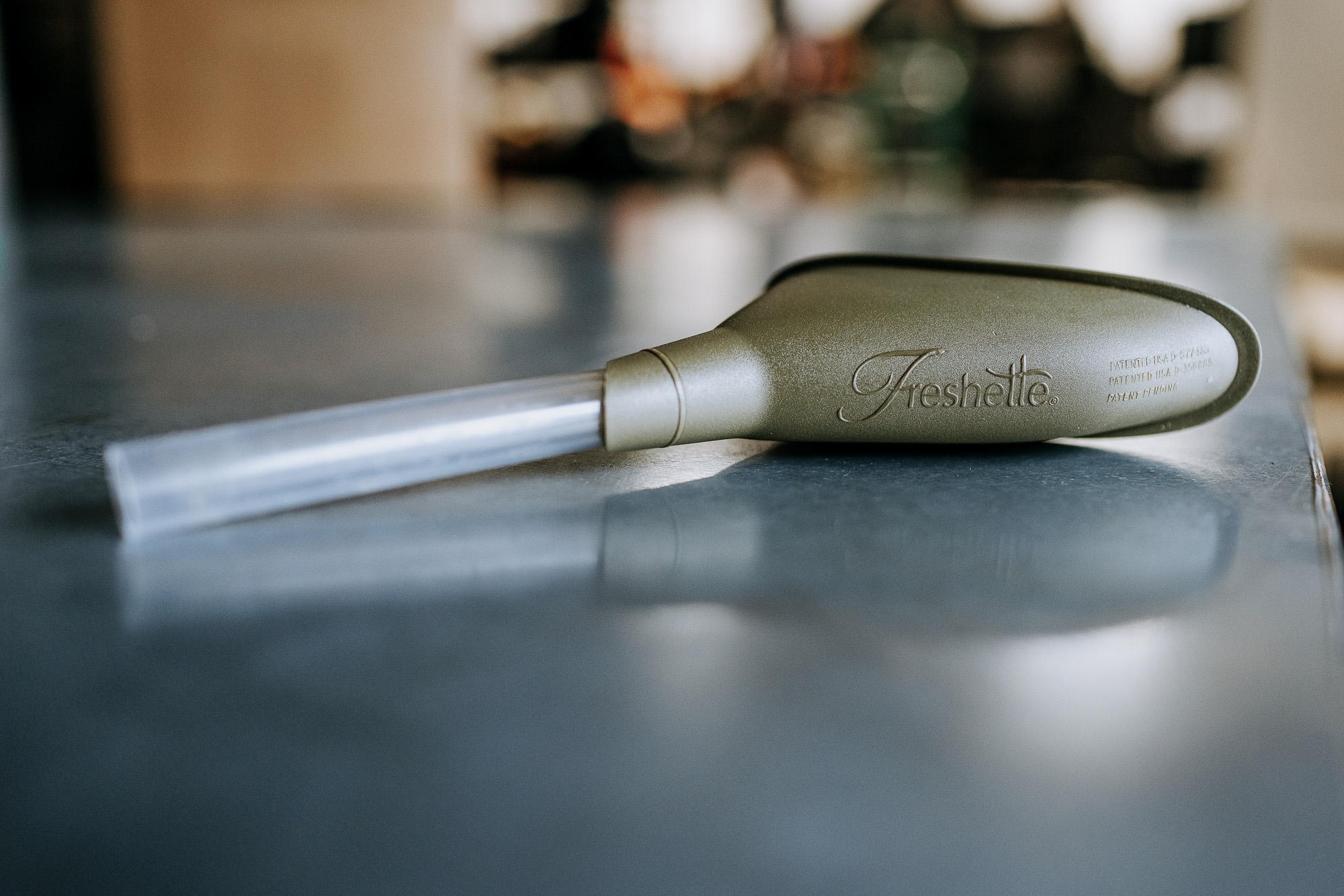
Freshette is a woman-owned small business dedicated to inspiring confidence, independence, and the freedom to “go” nearly wherever and whenever nature calls. I tested the Sports and Travel version, which includes a palm-sized funnel, 5-inch retractable extension tube, and reusable plastic carry bag. With a 1.5- x 4.5-inch funnel, this urination device is shaped quite differently than the PStyle; I found the Freshette’s generously-sized funnel easier to master on the first try. In contrast, however, I preferred PStyle’s cloth carry case.
The Freshette accompanied me on a winter trip to Vancouver Island and quickly became a reliable companion in freezing temperatures, at roadside stops behind our Toyota Tundra, and during midnight wake-up calls paired with a trusty Nalgene bottle (see below). I was initially concerned about potential leakage between the anatomically-designed funnel and the tube, but my worries weren’t realized as the fit is very snug. Freshette directs users to use the rear edge of the funnel to collect residual drops, eliminating the need for toilet paper. Yep, this checks out.
Made from high-density BPA- and phthalate-free polyethylene, the Freshettte weighs 1.2 ounces and is dishwasher safe. In the field, rinse with water if available or, if not, shake, wipe dry, and store until your next washing availability. Step–by-step device instructions (with diagrams) can be found on Freshette’s website and printed on its plastic carry bag.
$24 | freshette.com
URINATION BOTTLES
Nalgene 32-ounce Wide Mouth Sustain Water Bottle

There are times when exiting a warm sleeping bag to respond to a nighttime bladder call seems nearly impossible, especially in torrential rain or snow, while urban camping, or during a mountaineering, rock climbing, or hiking trip. Most of us have owned a Nalgene at some point, and, odds are, many of you have used one as a urination bottle too. It just makes sense—they’re inexpensive, have a wide mouth, and decent-sized capacity, even for the most hydrated of us. Plus, pee bottles can be paired with a personal urination device.
Nalgene has harnessed recycling technology, transforming plastic destined for landfills into BPA- and BPS-free bottles made from resin. Dishwasher-safe and made in the USA, bottles come in various sizes but max out at 48 ounces. The company stands by its safe leakproof guarantee, thanks to continuous straight-shouldered semi-buttress threads, which is a comfort when your 32-ounce water bottle is topped off with the results of last night’s Big Gulp.
While I’ve chosen a hard-sided bottle for this review, this comes with pros and cons. Hard plastic is easier to grip, can stand independently, and is straightforward to clean. But the 48-ounce Nalgene Wide Mouth Canteen might be more suitable depending on your use case. At 2.25 ounces, this option is lightweight and offers a foldable alternative.
$19/48-ounce canteen, $17/32-ounce bottle | nalgene.com
Metolius G-Whiz Pee Bottle
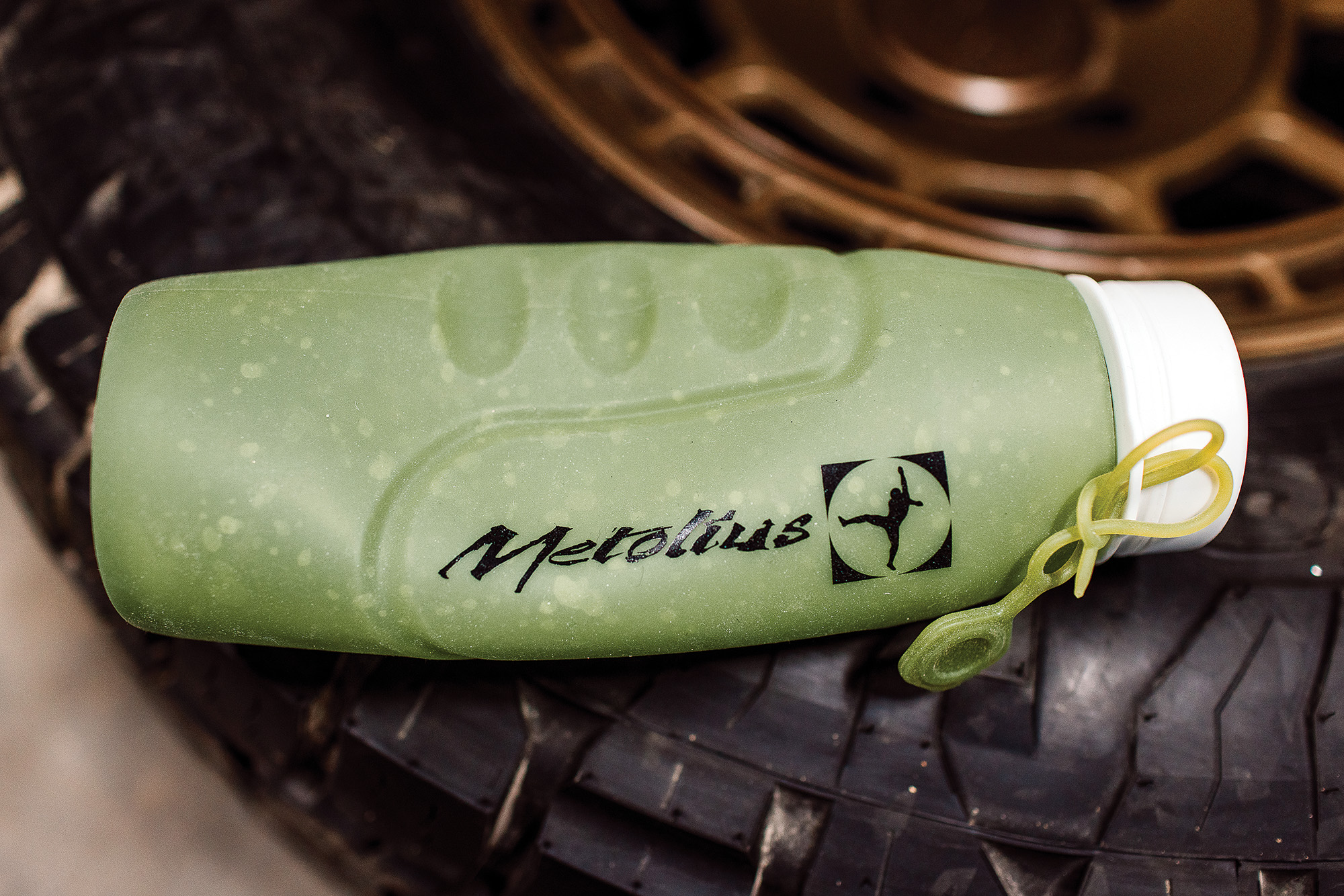
Back in the 1970s and 80s, climbing equipment choices were fairly limited, and much of the gear left something to be desired. In response to this, Doug Phillips began prototyping harnesses, bolt hangers, and spring-loaded adjustable nuts in his Oregon garage, eventually founding Metolius in 1983. The company prides itself on exhaustively testing gear in the lab and the real world, while working with sanctioning bodies like the CE and UIAA to help improve standards for outdoor gear.
Although the Metolius G-Whiz pee bottle was designed with climbers in mind, its features also suit the overland traveler. When empty, the 9.75- by 3-inch silicone bottle rolls and is secured with a tether in the collar, taking up little vehicle space and a mere 5.2 ounces of weight. The G-Whiz holds 33.8 ounces (1 liter) of liquid and is leakproof, freezable, and comes in an obscured green color so you can see volume but not contents.
This bottle performed well during testing, and I appreciated its foldable nature and multi-gender compatibility that accepts a urination device if preferred. Sure, the G-Whiz is a tad wobbly at times, but I never experienced a mishap and felt the space savings were worth it. An eye-catching skull-and-crossbones graphic and “Do Not Drink!” icons on the bottle warn of its contents—a wise addition.
$20 | metoliusclimbing.com
COLLAPSIBLE PORTABLE TOILETS
Thunderbox Outback Toilet
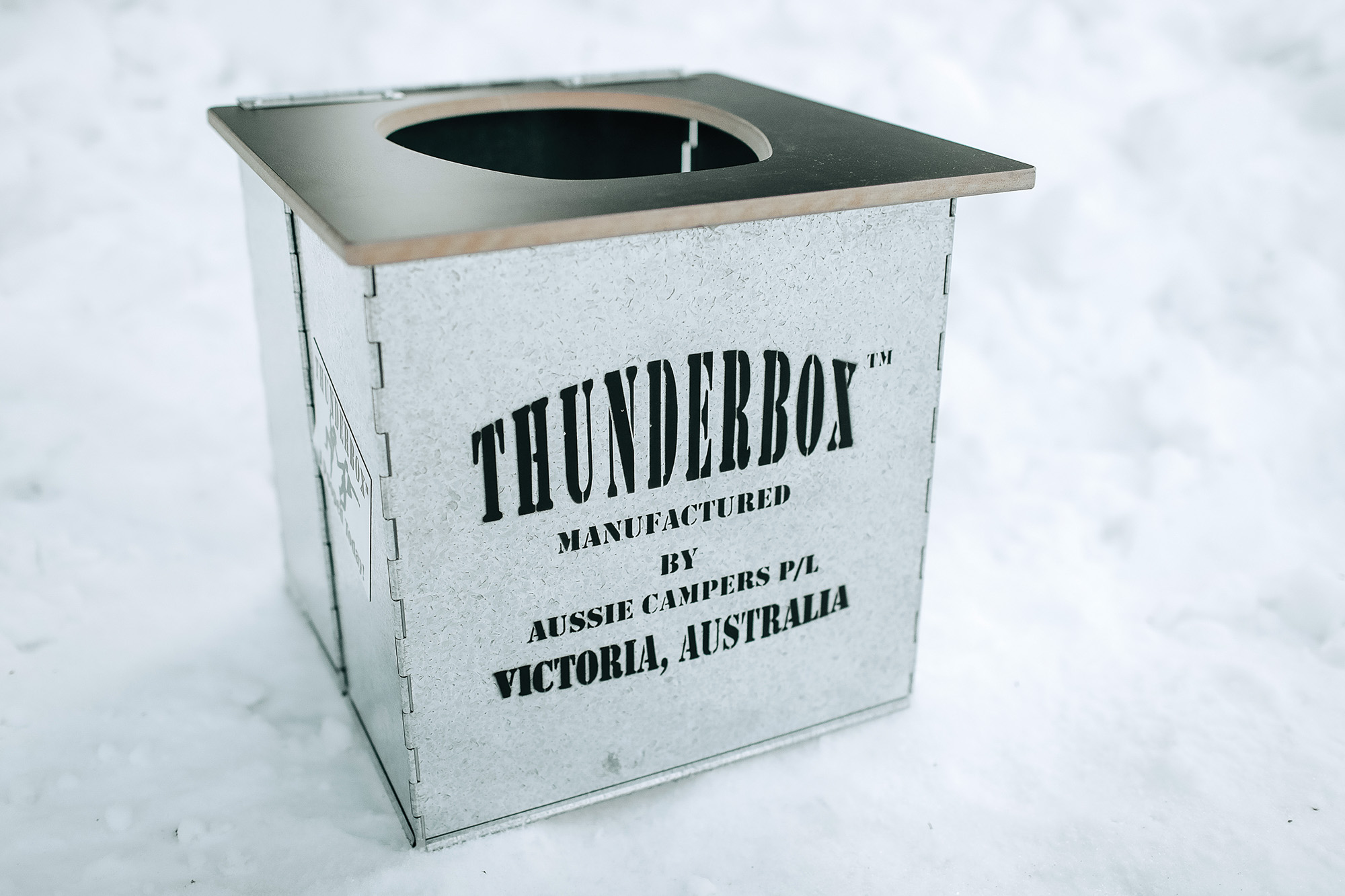
The founder of Thunderbox USA searched high and low for a bathroom solution for his truck camper, but with a resistance to the built-in toilet. The blackwater geyser scene from the 2006 film, RV, put him off any dump station requirements. Lo and behold, he found the Thunderbox toilet in Australia, where it had been serving the needs of Outback adventurers for many years.
This collapsible portable toilet performed aptly during the Women Overlanding the World retreats in Costa Rica because it packed flat (to 1-inch thick), slid into an included carry bag, featured a generous and comfortable sitting surface, and felt sturdy while sitting. Plus, handles made lifting, carrying, and transporting a cinch.
The box deploys quickly and intuitively (which is helpful when nature is calling urgently) and is effectively lined with a WAG bag or placed over a bucket or hole in the ground. Mine was equipped with In-viro biodegradable bags, designed for landfill, compost, and soil deposit, and can be inserted into the Thunderbox as you would a trash bag into a wastebasket.
Made of wood laminate MDF and heavy-duty steel, this baby clocks in at just over 9 pounds, and at 16 x 16 x 15.5 inches, it is the same height and seat size as your typical home toilet. The Thunderbox has been weight tested to a limit of 500 pounds.
$175 | thunderboxusa.com
Wrappon PF-1 and WT-4 Toilet Systems
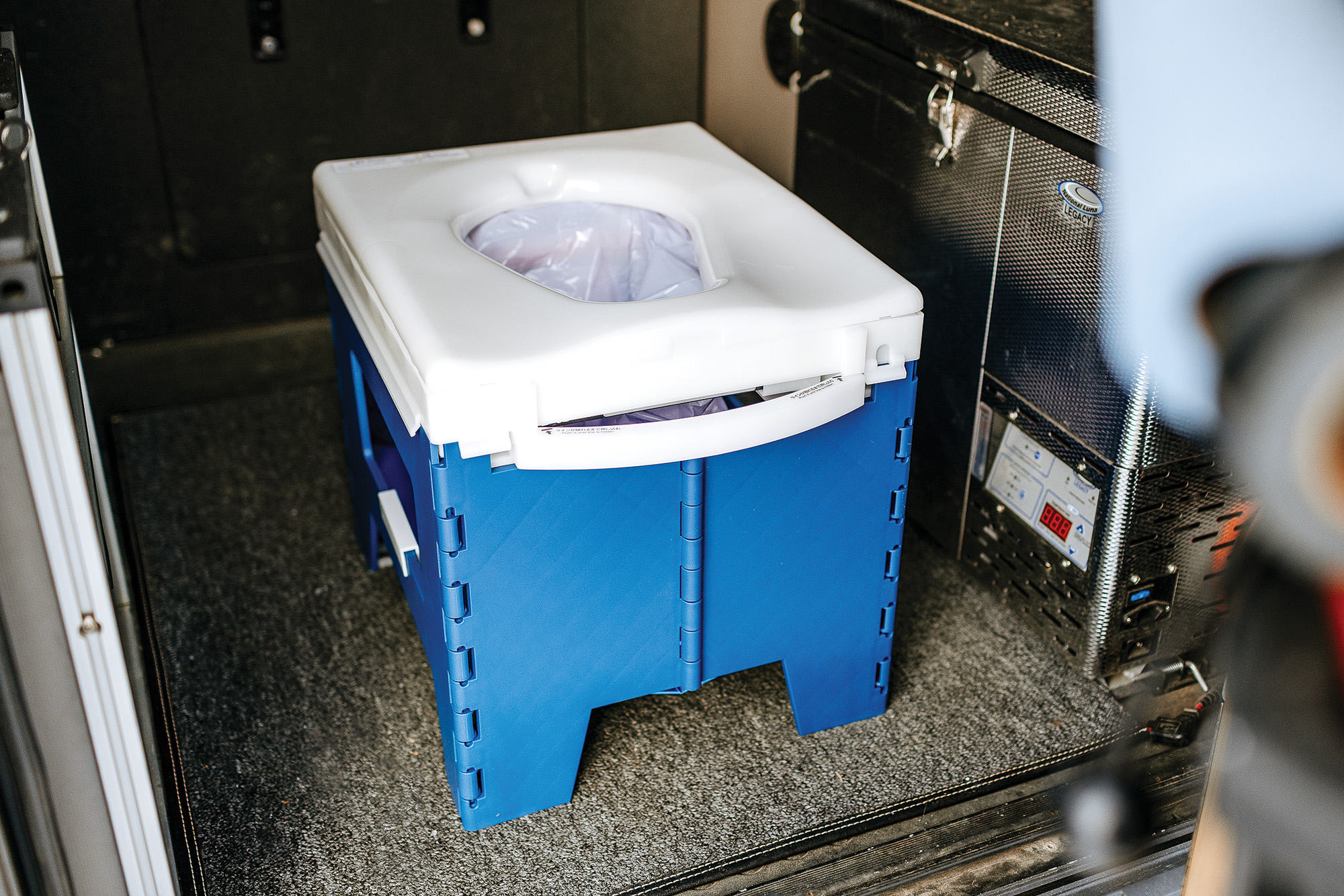
Wrappon’s PF-1 toilet system caught my eye for two reasons: it packs flat(ish) and uses thermocompression to bond the waste bag. This Japanese-made polypropylene commode is the simpler version of the Wrappon Trekker WT-4, which has earned its solid reputation in the overland space. Measuring 14.8 x 20 x 15.7 inches and weighing 9.2 pounds, the PF-1 has a much larger footprint than the Thunderbox while flat, is a bit bulky while standing, but offers a comfortable sitting space with a maximum load capacity of 220 pounds. This weight rating will be limiting for some.
The toilet system is equipped with 30 single-use waste bags secured to the frame by two clips and two grooves. Although the clips and grooves weren’t confidence inspiring, I didn’t experience a single mishap during testing. The thermocompression mechanism requires 35 watts and is powered by an AC adapter or power cord that plugs into a 12-volt socket or cigarette lighter; if power is not available, the bags can be tied by hand. The lavender-colored baggies are nearly transparent and aren’t made from puncture-resistant material. At first, I struggled with the thermocompression mechanism, and the package didn’t completely heat seal; fortunately, by pulling the handle out and up, you can thermocompress the bag more than once. (AG)
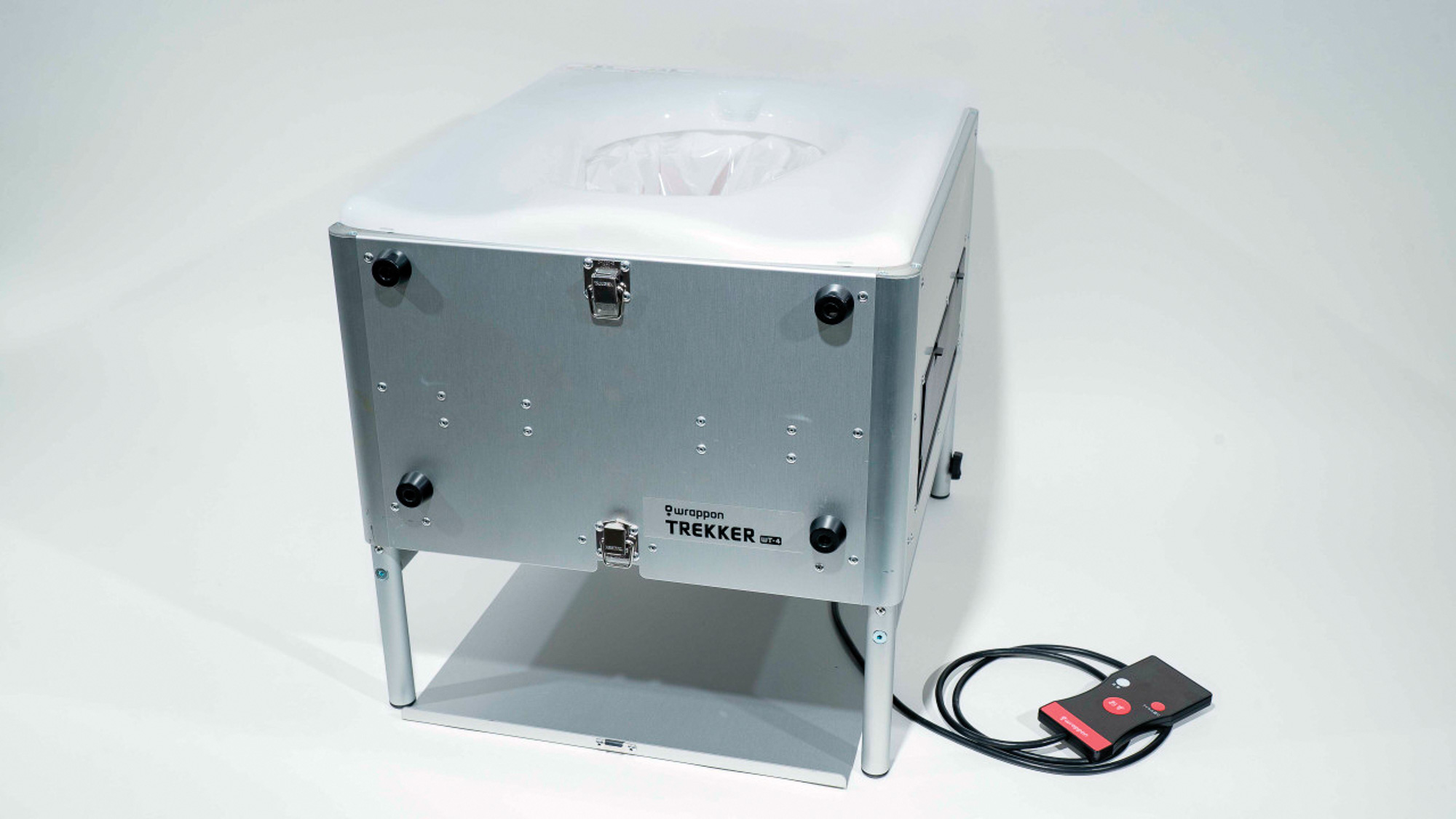
The Wrappon Trekker WT-4 is a heavy-duty portable version of the system, which collapses to the size of a carry-on suitcase and sets up with fold-out support legs. The aluminum construction is robust and lightweight, fully seals each use, and trims the enclosed bag. It can be installed semi-permanently in a camper or used with a privy for vehicle-based camping. (SB)
$1,596/ WT-4, $595/PF-1 | wrappon.com | ok4wd.com
PORTABLE TOILET
Dometic 972 Portable Toilet
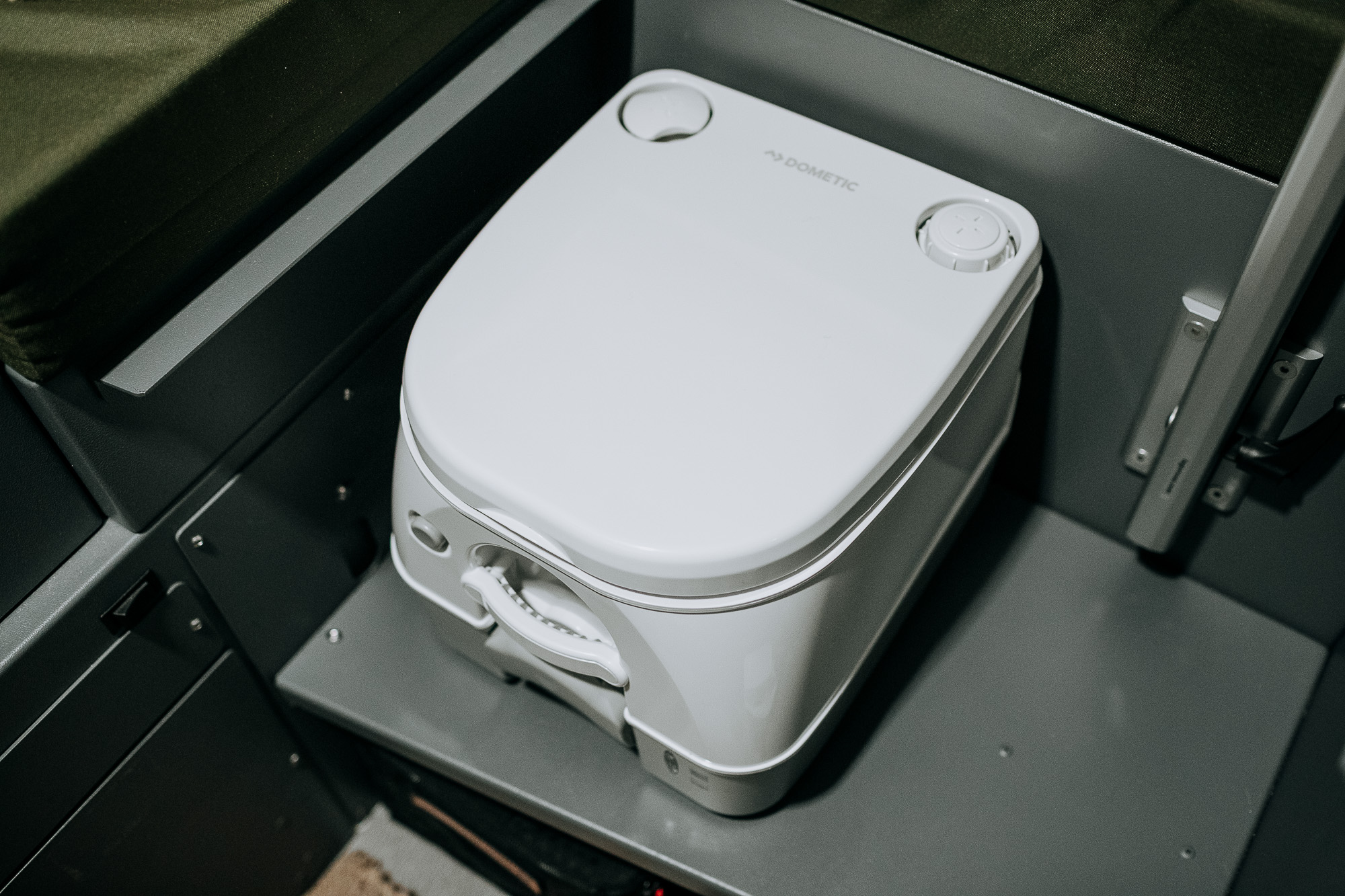
Dometic’s 972 is about the closest to a home flush toilet you’re going to get while out in the bush. Designed for smaller vehicles and tents and featuring push-button technology, this 12-pound portable loo offers 2.6 gallons of wastewater and a 2.3-gallon freshwater capacity. At 15.25 x 12.5 x 13.13 inches, Dometic points to the toilet’s space-saving design as being particularly useful for overlanding.
Using uncontaminated water, I conducted a stress test for leakage. Aside from dumping waste, the risk of a spill or seepage while bumping along an off-pavement track is one of my biggest concerns about any portable toilet. After filling the bottom tank, I shook the toilet vigorously from side to side and upside down. Thankfully, the lubricated seals held, resulting in no leaks.
As for Dometic’s claim that the 972 has a “full-size seat for comfort,” I can’t agree. While the toilet’s dimensions are convenient for many vehicle-based pursuits, it is low to the ground, which could be a con for folks with long legs or mobility challenges. I found the seat to be small and uncomfortable—not a good place to idly solve the daily Wordle puzzle. If used regularly, a flushable toilet requires consistent access to water and the ability to dump your refuse responsibly. If you’re willing to take that on, the 972 could be a suitable fit.
$235 | dometic.com
COMPOSTING TOILET
Nature’s Head
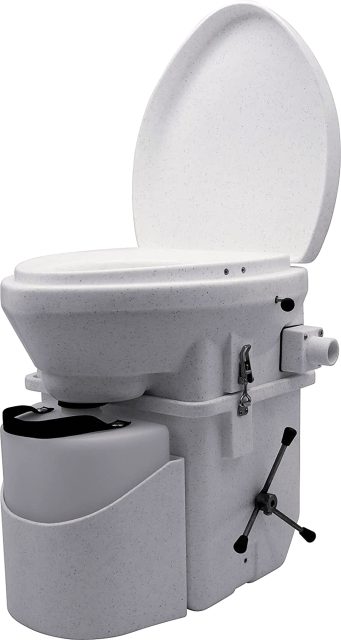
Every so often, a product so thoroughly surprises us that it redefines our best practices. This is certainly true of a composting toilet, which we associate more with off-grid cabins than overlanding. However, we had multiple recommendations for Nature’s Head, so we installed one in our project Scout Kenai camper. The idea of a composting option appealed to me, as it requires minimal installation and a low-wattage 12-volt circuit. The power turns a quiet fan that exhausts from the solids bin to the outside air, further promoting the composting process.
Before first use, a few bricks of coconut fiber are broken up, moistened, and placed in the solids bin. From there, it will last up to a month of typical use for two people. Liquids are captured in the front tank, which keeps urine separated and stops any smells. The 2.2-gallon volume lasts a few days of use and is easily removed for dumping into any toilet. The solids bin is emptied by turning upside down with a kitchen-sized trash bag attached. Cleanup of the inside isn’t required as it helps start the composting process again with the new fibers.
The unit weighs about 25 pounds and is reasonably compact. It easily fit in the toilet cubby in the Scout and was problem free for over a year of use. We did not find any notable downsides or failures of the unit. The one minor inconvenience is the requirement of disposing of toilet paper or wipes in a separate trash can. We found one with a lid that did the trick. (SB)
$995 | natureshead.net
TOILETS UNDER $100
Cleanwaste Go Anywhere Portable Toilet
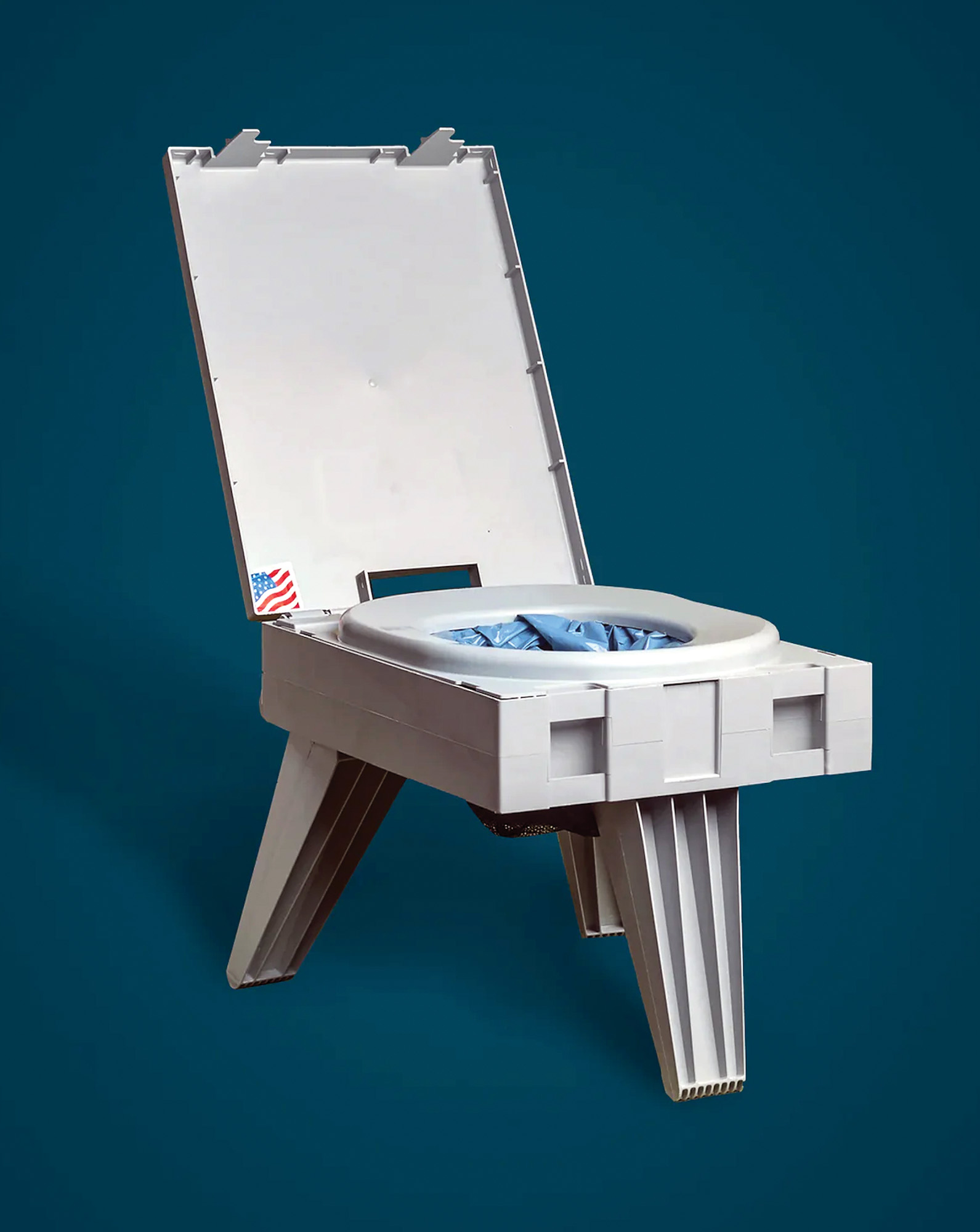
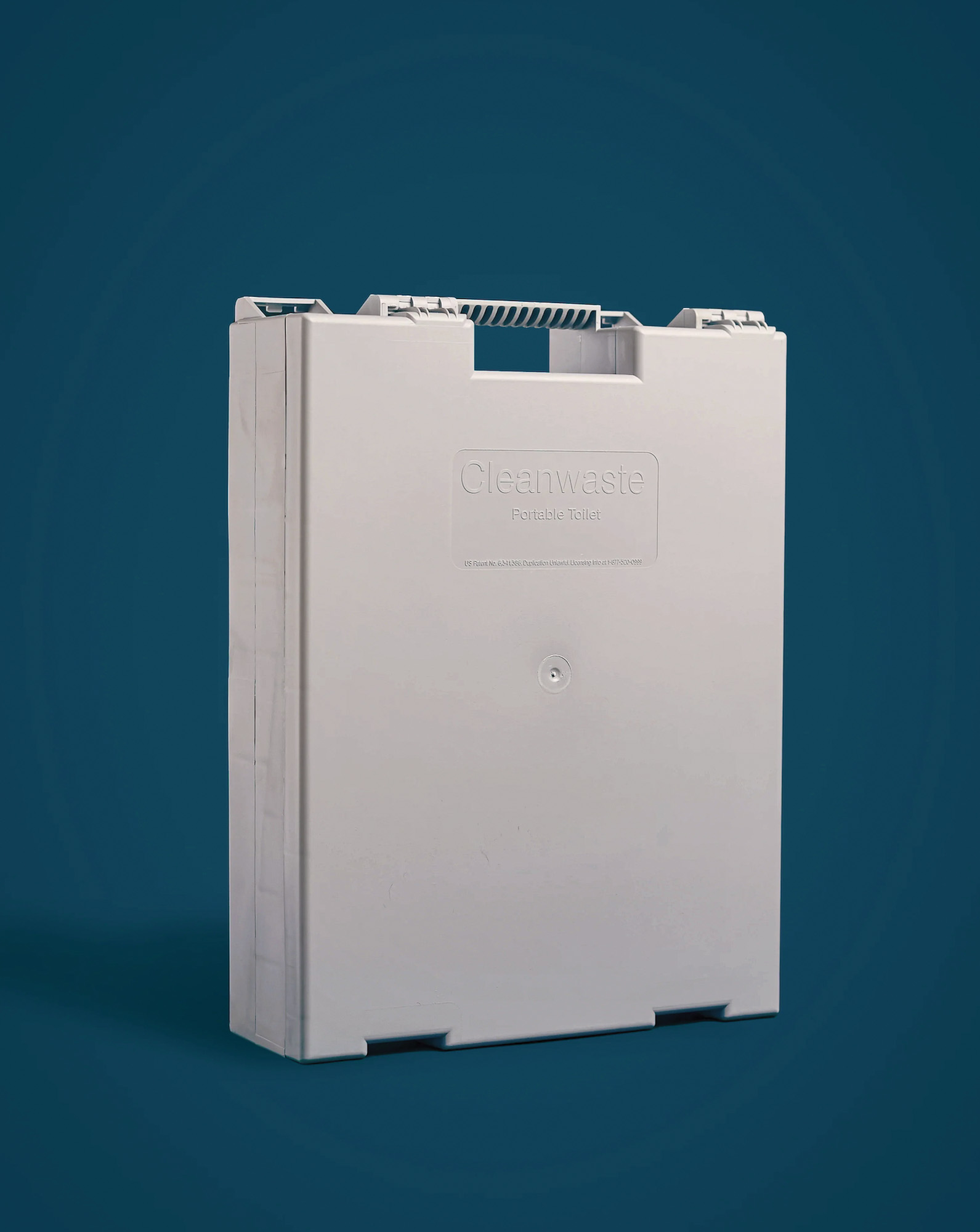
“Go with confidence” is the motto of Cleanwaste, a company that creates environmentally sensitive restroom solutions for everyone from the US military to the outdoor adventure or healthcare patient. Offering a weight capacity of up to 500 pounds, the Go Anywhere portable toilet kit includes a three-legged foldable john similar to your average household toilet; it sits 14 inches off the ground and features the same seat size too.
Weighing 7 pounds, the Go Anywhere lives up to its name by folding to a standard briefcase size measuring 19 x 4 x 15 inches and is used in combination with a cathole, bucket, WAG bag, or the included Go Anywhere toilet kit. The kit is equipped with toilet paper, hand sanitizer wipes, and two multi-use bags that are safe to dispose of in the trash. One is pre-loaded with Poo Powder, a blend of NASA-developed deodorizing absorbent that can gel up to 32 ounces of waste; the other is puncture-resistant with a zip-close to secure and safely transport your business.
As this portable toilet has three legs, finding a stable ground surface was more important than with the others I tested. The removable lid can be placed underneath two legs for additional stability. Deployment was intuitive and quick, the seat felt comfortable enough, and I like that the product closes into a rectangular package with a handle for easy transport.
$89 | cleanwaste.com
Reliance Products Hassock 2.0 Portable Toilet
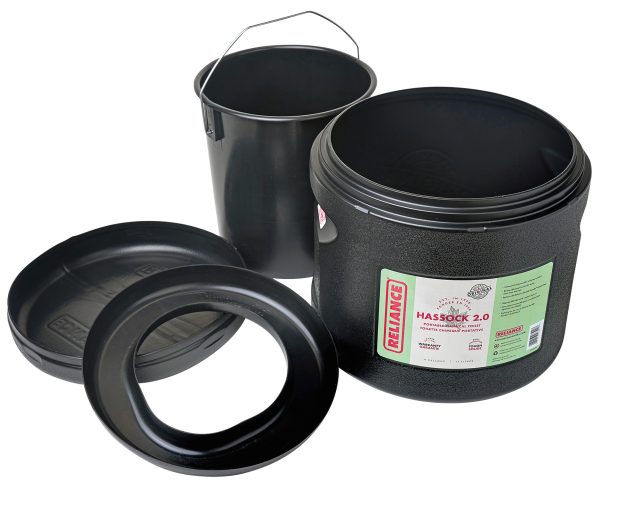
Founded in 1958, Reliance is a family-owned and operated company based in Winnipeg, Canada. Committed to sustainability, Leave No Trace practices, and lessening dependence on single-use plastics, 90 percent of Reliance products are manufactured using renewable hydroelectricity. They are built to last and can be recycled at the end of their lifespan. Reliance offers a generous selection of thrones, ranging from a simple bucket and lid combination (Luggable Loo) to burly flushable portable toilets.
Measuring 15 inches in diameter by 14 inches in height, the Hassock 2.0 weighs 4.2 pounds and has a weight capacity of 300 pounds. Its self-contained cylindrical design includes a removable 4-gallon interior bucket compatible with any Reliance Double Doodie bag, a puncture-resistant double-zipped baggie containing Bio-Gel with a capacity of up to 5 pounds of human waste (sold separately). Made from polyethylene, this portable toilet features a contoured seat that provides “at-home” comfort. The hole size is suitable for adults and kids alike.
Although the Hassock 2.0 is small enough to be tucked away in an overland vehicle, I prefer the portable toilets that fold because they use less space. That being said, the Hassock 2.0 felt stable during testing, although low to the ground, and the interior handle was a helpful addition during cleaning and transportation. I appreciate its discreet design, and for under $100, the price makes it a solid option.
$47 | relianceoutdoors.com
Our No Compromise Clause: We carefully screen all contributors to ensure they are independent and impartial. We never have and never will accept advertorial, and we do not allow advertising to influence our product or destination reviews.


